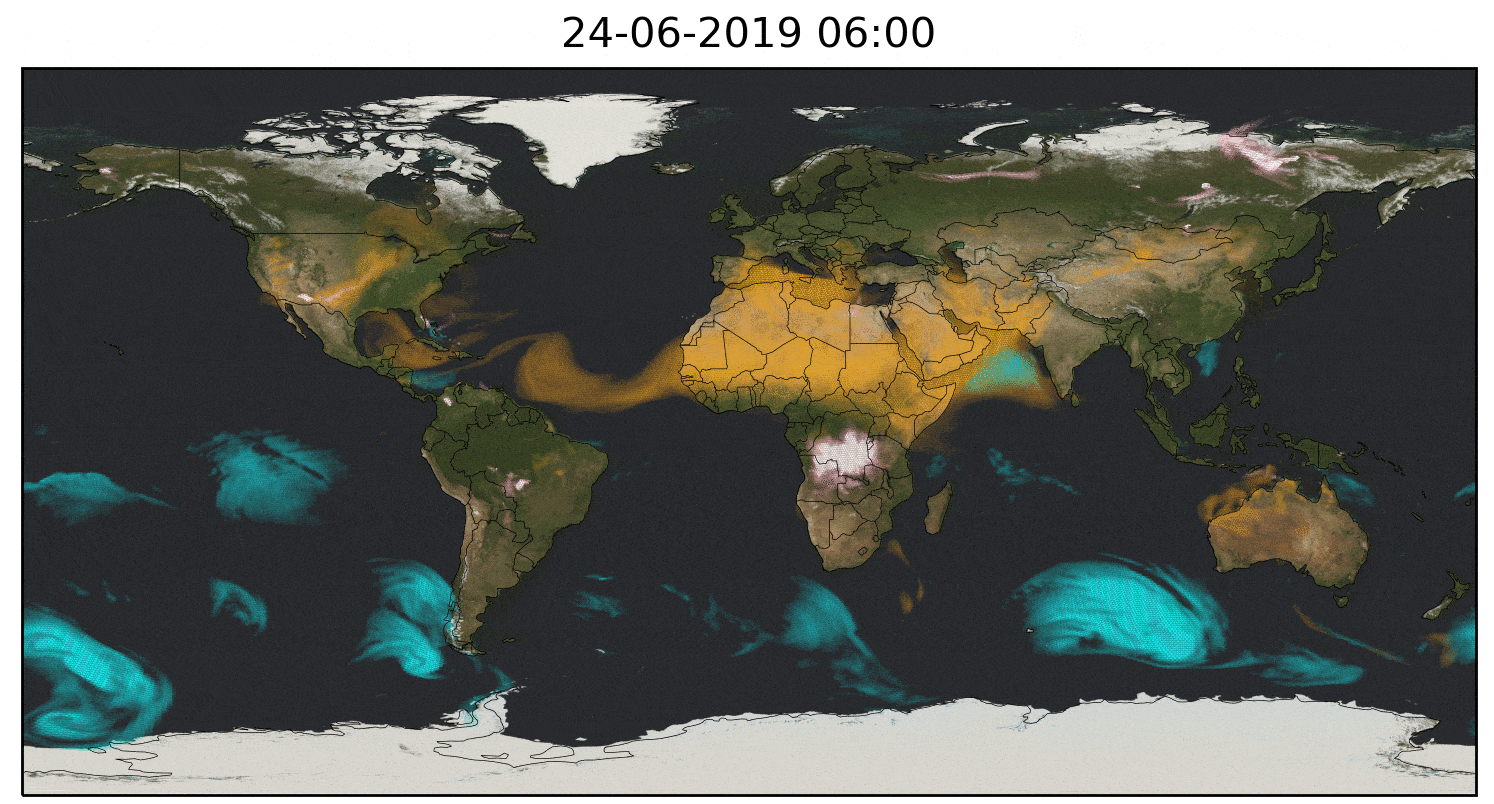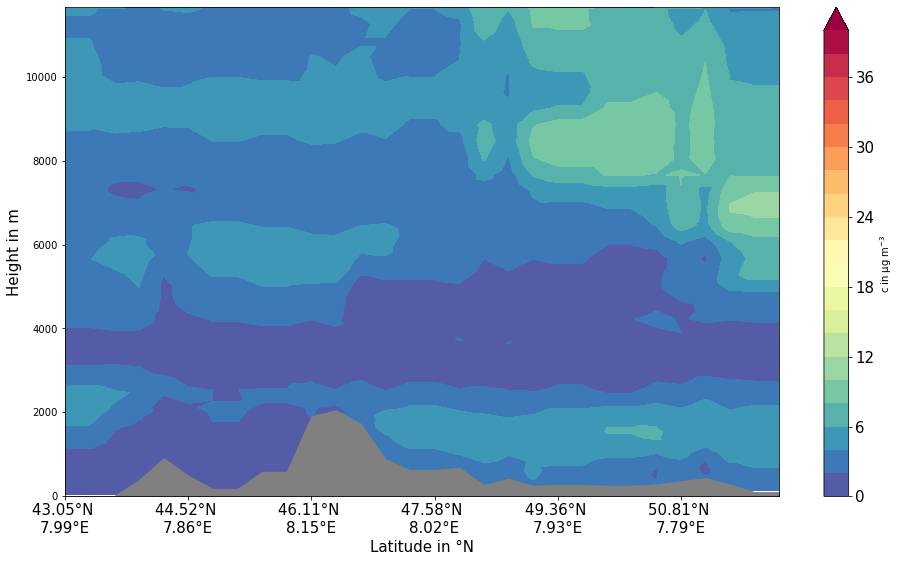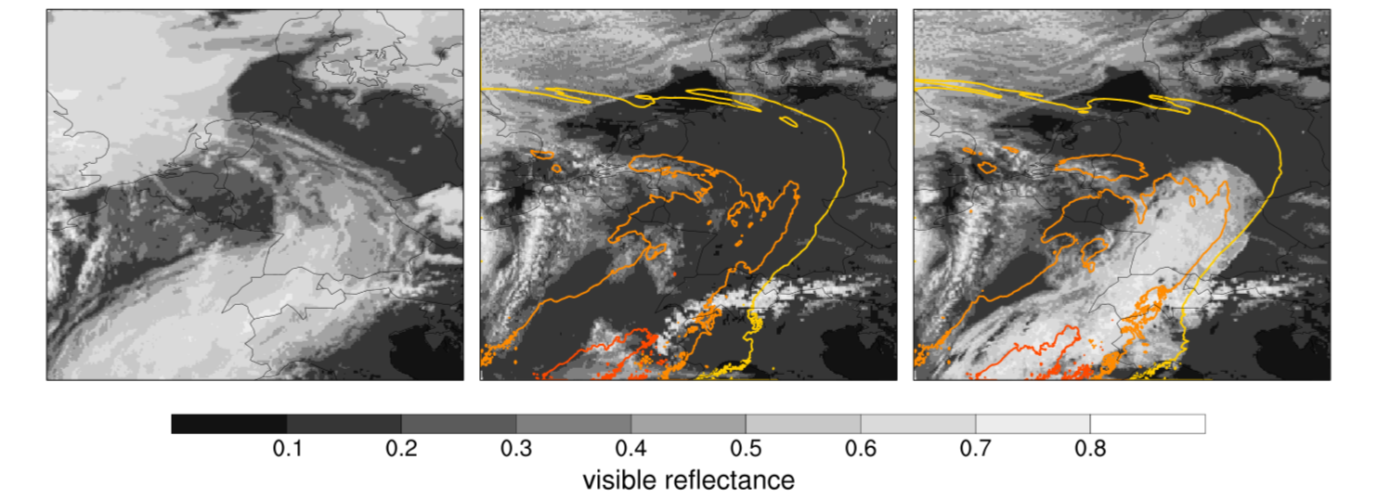Aerosol effects on photovoltaic systems - 50 shades of gray

https:// bwsyncandshare.kit.edu/s/rQ22ip5LMA2qjWi
Back in the day, Loriot, a German comedian, already knew that there are many shades of gray. Aerosols haze the atmosphere and consequently reduce the radiation at ground level. This means that the power yield of photovoltaics (PV) is reduced. Loriot mentioned dust gray and ash gray. However, we also investigate the influence of other aerosols such as sea salt. The animation (Fig. 1) shows a global ICON-ART simulation of mineral dust (yellow), biomass burning aerosol (white) and sea salt (blue). In our PermaStrom project, we investigate how these aerosols can affect PV power yield. With our research, we improve the PV yield forecasting to support a more stable power grid.
The optical properties of the aerosols, that modulate their interactions with radiation, can alter during their transport. Water and other solid, liquid or gaseous substances can accumulate on the particles in the atmosphere. This process is called aging of the aerosols. It causes further shades of gray in the atmosphere.

at 8°E. Left: externally mixed dust,

at 8°E. right: internally mixed dust, at 26.06.2019 6 UTC.
Fig. 2 shows an example of the vertical dust distribution along a north-south section at about 8° E for June 26, 2019. As visible in Fig. 1, Saharan dust is transported to Europe during this period. The left plot in Fig. 2 shows at which altitude the so-called uncoated dust is present. In this mixed state, no other substances accumulate on the dust particles. The right plot, on the other hand, shows that especially at 2-5 km altitude an aging of the dust has taken place. Here, a liquid shell has formed around the dust particles. This shell affects on one hand the scattering of the radiation and on the other hand the cloud formation. Both are subject to investigation in the PermaStrom project.
The above mentioned aerosol effects describe the direct effects of aerosols. Aerosols can also act as condensation or ice nuclei. By accumulation of water and ice, clouds can be formed or the lifetime of existing clouds can be extended. This process is one of the indirect aerosol effects and provides a further shade of gray in the atmosphere - cloud gray. So far, numerical models have had significant problems simulating high ice clouds (cirrus) associated with dust events. Seifert et al. have developed a parameterization that allows the simulation of this phenomenon. This leads to a significant improvement of the radiation prediction during such episodes. The parameterization is based on the concept that at high altitudes two opposed air masses lie on top of each other. A moist, very clean air mass overlies a dry air mass with many mineral dust particles that can serve as ice nuclei. Due to instabilities at the upper edge of the dry air layer, mixing of these two air masses occurs. Thus, dust particles enter the moist air mass and cloud formation occurs. Details of this parameterization and its application to various Saharan dust events are described in Seifert et al. 2022. As an example, Fig. 3 shows a satellite image and, for comparison, two ICON-ART simulation results. The plot in the middle shows the simulation result without and the plot on the right shows the simulation result with the parameterization for cirrus clouds. The colored isolines indicate the outlines of the simulated dust cloud. This shows that with the parameterization there is a significant improvement of the cloud cover prediction in this period.

Seifert, A., Bachmann, V., Filipitsch, F., F¨orstner, J., Grams, C., Hoshyaripour, G. A., Quinting, J., Rohde, A., Vogel, H., Wagner, A., Vogel, B.: Aerosol-cloud-radiation interaction during Saharan dust episodes: The dusty cirrus puzzle, Atmos. Chem. Phys. Discuss., doi:org/10.5194/acp-2022-746 (2022)
Contact Person:
Anika Rohde, Ali Hoshyaripour, Heike Vogel, AG Aerosol- und Spurenstoffmodellierung
